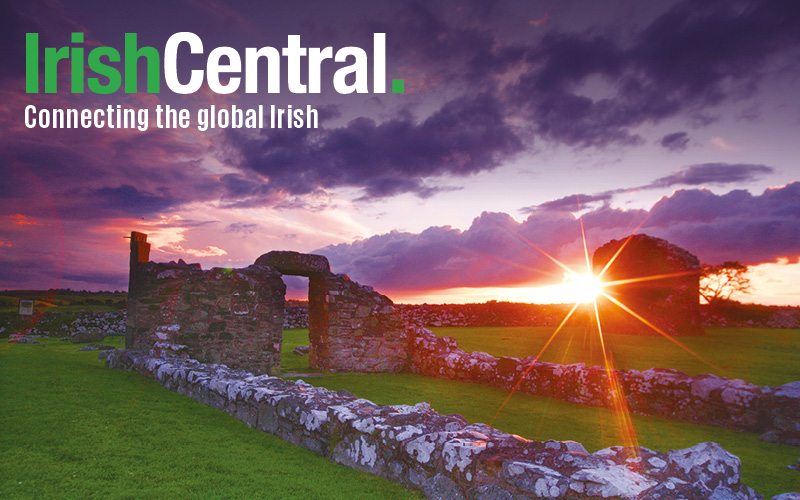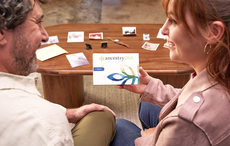The following sources should be reviewed in order to find a location in Ireland for your ancestor, and help you to determine the date of his or her birth, marriage or death. Even if you are still none the wiser having reviewed all these sources, don't give up hope - take a look at the records relating to your ancestor's siblings too as they may hold the clue.
Conversations with Relatives
Make an effort to talk to your older relatives about what they remember of the family, their memories and reminiscences. It is the little details that help bring the story of your family to life, and it can be a very rewarding experience. Often your relative might also be able to show you photos, letters and other documents that will provide further information and clues about your family. Or they may remember conversations with a grandparent or older relative, about life in the old country. Even the smallest detail can provide a lead and open up research.
Family Documents
You might find that family members still have some old papers that can help with your research. While everyone would love to discover a record such as a family bible listing names and dates of births and deaths of ancestors, in reality most of us are unlikely to be this lucky. However, a whole range of other documents, personal papers and mementos can prove useful - these include everything from letters and photographs, memorial or mass cards, even newspaper cuttings. Remember, someone in your family kept these records because they were personally relevant. Take a closer look and see what they tell you about your family's origins.
Gravestone inscriptions and obituaries
Many Irish emigrants had fond memories of their homeland, and the last act of duty and love that a family could do for an Irish-born parent, might be to put up a gravestone which would record their place of origin in Ireland. For this same reason, newspaper obituaries are always worth a look.
Civil records of births, marriages and deaths
In the U.S. civil birth, marriage and death records are organised by state, so your approach will vary according to where your ancestor came from. Take a look at this guide to help you locate the birth, marriage and death records of your ancestors. (http://genealogy.about.com/library/blvitalus.htm). You can then write to the relevant body to obtain a copy of the birth, marriage or death record. These records will provide you with further information on family members.
Census returns
The following US census returns often include information on place of birth and may be viewed online at www.ancestry.com: 1850, 1860, 1870, 1880, 1890, 1900, 1910, 1920 and 1930. If your ancestor was born in Ireland, normally only the country name will have been entered into the form, so it is recommended that you review other records to find an Irish county, parish, town or townland name to help narrow the search. The census is helpful in providing an approximate birth date for your ancestor.
- The 1870 and 1880 census returns ask for the place of birth of any foreign-born person, and the place of birth of their parents, but usually only a country will be given.
- The 1890 census provides some further useful information including the number of years an individual has been in the US (you can then search passenger lists based on this date) and whether they have been naturalised and naturalization papers taken out (if your ancestor has naturalisation papers this is another useful source you can take a look at).
- The 1900 census asks for actual year of immigration and the 1920 census builds on this, requiring the naturalisation year to be provided.
- By 1930, individuals of Irish descent are required to state whether they are from the 'Irish Free State' (as the Republic of Ireland was then called), or Northern Ireland.
Naturalization Records
You can search for these at www.familysearch.org/eng/Library/FHLC/frameset_fhlc.asp, by entering 'naturalization' into the search box and the area of the US your ancestor lived in. The records can then be ordered in to your local Family History Centre.
Will, probate and administration papers
These can be a useful source of more general family information. Sometimes an ancestor in the US will refer to his or her relations in Ireland, possibly giving a location for them, so it is certainly worthwhile seeing if any of your ancestors left a will.
Passenger Lists
Passenger lists can be accessed online via a number of key websites and some exist in book format also. The very early passenger arrival lists tend to document just the country of origin, but from the 1880s onwards they start to include more specific locations.
Original Place of residence/ settlement in the U.S.
If you've searched all the U.S. records and still can't find a record of where in Ireland your ancestor came from, then look to the history of the city or district where your immigrant ancestors first settled when they arrived in America. Ask a local historian if they know of "Irish communities" or Irish towns at any time in the past.
Historically most immigrants to the U.S. used personal immigration networks. In other words. immigrants arriving in America put down roots in towns and districts, where they had personal connections through family, friends and neighbours from the old country. For example, in the mid 19th Century, the ancestors of Vice-President Joseph Biden, left county Mayo in Ireland and immigrated to America where they settled in Scranton Pennsylvania. Scranton already had a significant community of Irish immigrants from county Mayo.
Professional Researchers
If you are unable to do the research yourself, another option is to commission an American researcher. The Association of Professional Genealogists website (http://www.apgen.org/index.html) lists a number of researchers that might be able to help you.




Comments